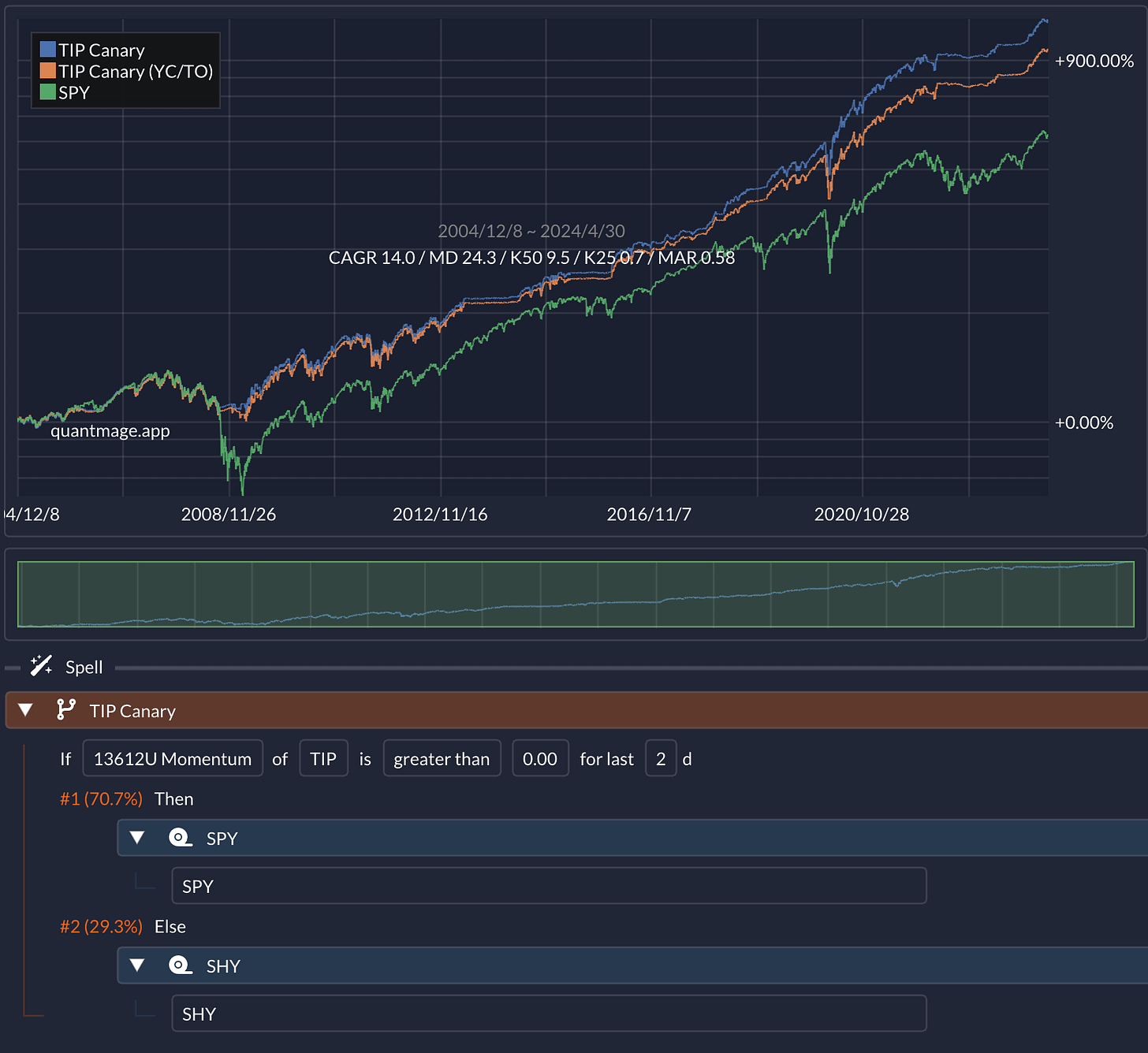When expected inflation or interest rates rise, navigating the stormy seas of risk assets like stocks becomes significantly more challenging. Costs for companies go up, alternative investments become more appealing, and overall, the investment climate pushes toward more conservative strategies. So, how can we detect these shifts early? One common approach is to watch the BND as a canary in the coal mine. As bond prices and yields generally move inversely, a rising BND price often signals bullish trends. However, this method doesn't account for rising inflation. What if there were a canary that does? Enter TIPS.
📣 Quick Heads Up! Just a reminder: everything I share here is for your information. I'm not acting as a financial advisor, nor am I endorsing specific investments. Always do your own research and consider consulting with a financial professional before making investment decisions. Now, let’s get into the details!
TIP Canary
TIPS (Treasury Inflation-Protected Securities) are a type of U.S. treasury bond designed to fight inflation. They adjust your returns based on inflation rates, ensuring either the adjusted higher price or the original principal amount—whichever is greater—upon maturity. If inflation expectations rise, so do TIPS yields, leading to lower prices. Therefore, the price momentum of TIPS can be an effective indicator of changes in both inflation and yields. The concept was highlighted in a paper by Dr. Keller, which suggested using an ETF like TIP to track TIPS, utilizing a 13612U momentum indicator (average total return over the past 1, 3, 6, 12 months). Does this strategy hold up? It appears so, based on some preliminary testing with QuantMage:
Switching between SPY (S&P 500 ETF) and SHY (Short-term Treasury Bond ETF) based on TIP’s performance yielded a much better risk-adjusted return than simply holding SPY over a 19-year period:
Achieving a higher CAGR (annualized return, 14% > 9.8%), with a lower maximum drawdown (24.3% < 55.2%) and reduced volatility (13.7% < 19.2%), underscores the strategy’s effectiveness. You can explore this further here.
Hybrid Asset Allocation
Dr. Keller's paper also introduces a tactical asset allocation strategy known as Hybrid Asset Allocation. This strategy is simpler than his earlier Bold Asset Allocation model. Besides relying on the TIP canary, it incorporates dual momentum tactics. When the canary signals, the strategy shifts to treasury bonds—choosing between IEF (Mid-term Treasury Bond ETF) and BIL (Short-term Treasury Bond ETF) based on which has higher momentum. When the canary signal is off, it selects the top four performers from a group of eight potential assets: U.S. equities (SPY, IWM), foreign equities (VEA, VWO), alternative assets (VNQ, DBC), and U.S. treasury bonds (IEF, TLT):
Notice that in the risk-on (canary-off) scenario, the model includes 12 assets instead of eight, adding four instances of BIL. This adjustment helps achieve the absolute momentum needed for dual momentum strategies: if fewer than four assets outperform the cash-equivalent BIL, then BIL is chosen by default.
The strategy also shows promising performance over a 15-year period, comparable to the balanced version of the Bold Asset Allocation. While it didn't completely dodge the COVID market dip—likely due to monthly rebalancing timing—adjusting to threshold rebalancing for more responsive measures improved performance and reduced drawdowns:
You can try out the strategy yourself here. For a thorough overview of the strategy, check out this AllocateSmartly article. The paper also offers a simplified version of the strategy using only SPY as the risk-on asset, detailed further in another AllocateSmartly article.
Your Turn
What do you think? Does the TIP momentum serve as a powerful signal in your view? Now it's your turn to use your creativity and devise a strategy based on this indicator!









